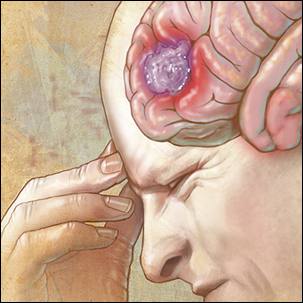-
Cancer
Consumer Health: What is your risk of ovarian cancer?

September is Ovarian Cancer Awareness Month, which makes this a good time to learn about your risk of developing ovarian cancer.
Ovarian cancer accounts for more deaths than any other cancer of the female reproductive system and ranks fifth in cancer deaths among women in the U.S., according to the American Cancer Society. More than 19,000 new cases will be diagnosed in the U.S. this year, and nearly 13,000 women will die of the disease.
Ovarian cancer is a growth of cells that forms in the ovaries. The cells multiply quickly and can invade and destroy healthy body tissue.
The type of cell where cancer begins determines the type of ovarian cancer that develops and determines which treatments are best.
Ovarian cancer types include:
- Epithelial ovarian cancer
This type is the most common. It includes several subtypes, including serous carcinoma and mucinous carcinoma. - Stromal tumors
These rare tumors are usually diagnosed at an earlier stage than other ovarian cancers. - Germ cell tumors
These rare ovarian cancers tend to occur at a younger age.
Symptoms
When ovarian cancer first develops, it may not cause any symptoms. When symptoms are noticeable, they're often attributed to other more common conditions.
Signs and symptoms of ovarian cancer can include:
- Abdominal bloating or swelling.
- Quickly feeling full when eating.
- Weight loss.
- Discomfort in the pelvic area.
- Fatigue.
- Back pain.
- Changes in bowel and bladder habits, including constipation and frequent urination.
Risk factors
It's not clear what causes ovarian cancer, although health care professionals have identified factors that can increase the risk of the disease.
Factors that can increase your risk of ovarian cancer include:
- Older age
The risk of ovarian cancer increases as you age. It's most often diagnosed in older adults. - Inherited gene changes
Gene changes you inherit from your parents cause a small percentage of ovarian cancers. The genes that increase the risk of ovarian cancer include BRCA1 and BRCA2. These genes also increase the risk of breast cancer. Other gene changes known to increase the risk of ovarian cancer include those associated with Lynch syndrome, and the genes BRIP1, RAD51C and RAD51D. - Family history of ovarian cancer
If you have blood relatives who have been diagnosed with ovarian cancer, you may have an increased risk of the disease. - Being overweight or obese
Being overweight or obese increases the risk of ovarian cancer. - Postmenopausal hormone replacement therapy
Taking hormone replacement therapy to control menopause signs and symptoms may increase the risk of ovarian cancer. - Endometriosis
Endometriosis is an often painful disorder where tissue similar to the tissue that lines the inside of your uterus grows outside your uterus. Ovarian cancer occurs at higher-than-expected rates in those with endometriosis. - Age when menstruation started and ended
Beginning menstruation at an early age or starting menopause at a later age, or both, may increase the risk of ovarian cancer. - Never having been pregnant
If you've never been pregnant, you may have an increased risk of ovarian cancer.
Treatment
Treatment for ovarian cancer usually involves a combination of surgery and chemotherapy. Other treatments, including targeted drug therapy, hormone therapy and immunotherapy, may be used in certain situations.
Connect with others like you in the Gynecologic Cancers support group on Mayo Clinic Connect, an online patient community moderated by Mayo Clinic.







